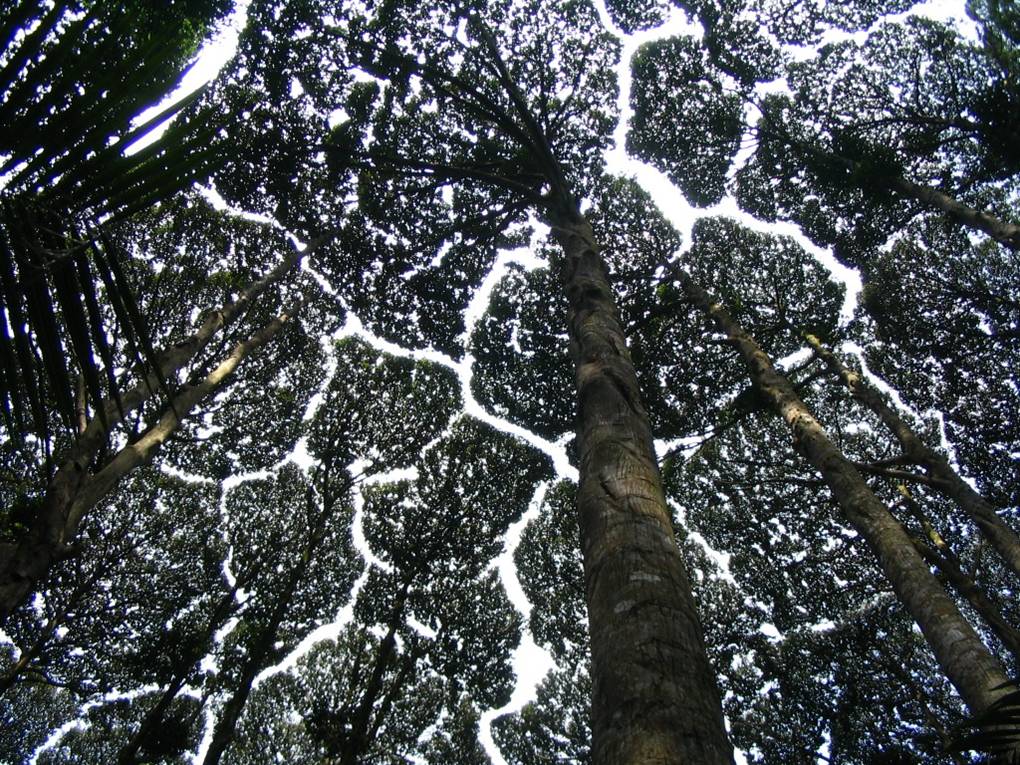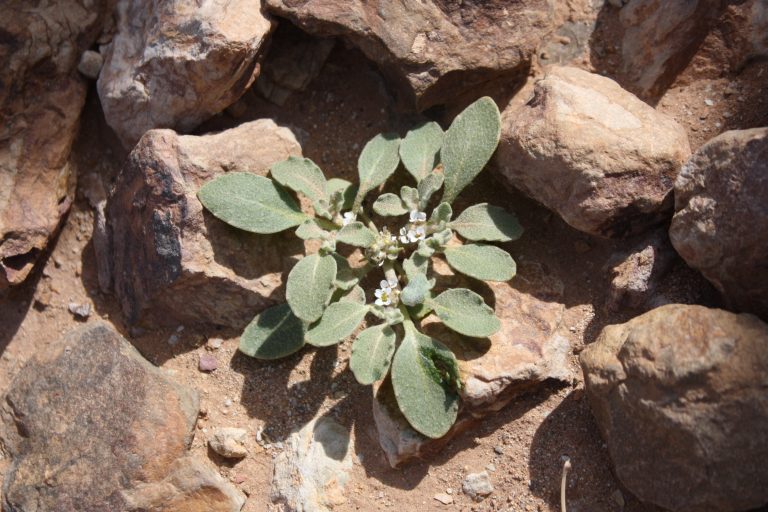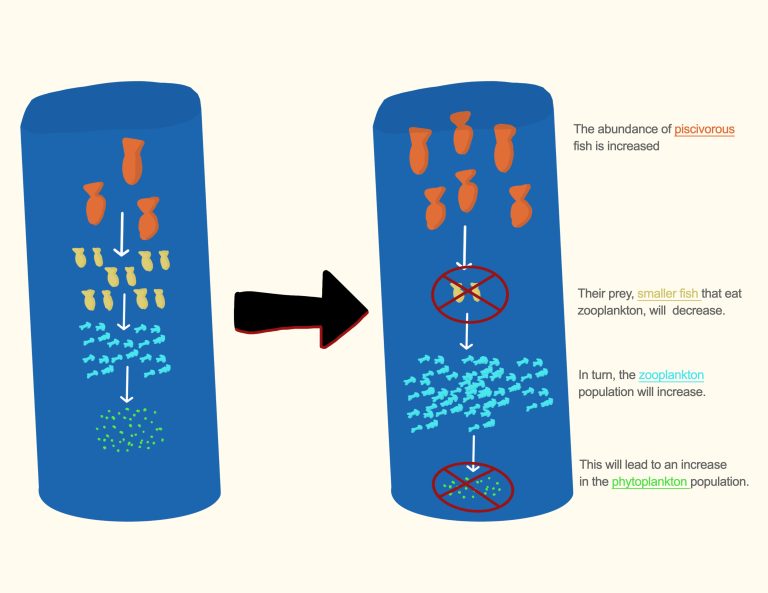Crown Shyness: Why Some Trees Keep Their Distance
Have you ever gone into a forest and looked up to see that the branches of different trees don’t touch one another, leaving gaps in the canopy?
That’s called crown shyness, and scientists have not fully understood yet why it happens.
In this post, you will learn the possible causes and theories for this phenomenon, its implications, and practical applications.
What Is Crown Shyness?
Let’s start our journey exploring this phenomenon of the plant world that baffles scientists even today.
The phenomenon
Crown Shyness, also known as canopy disengagement, canopy shyness, and inter-crown spacing, is where the topmost branches of trees avoid touching one another, creating intricate patterns in the canopy that can be seen from below.
This is mostly observed in dense, mature forests.
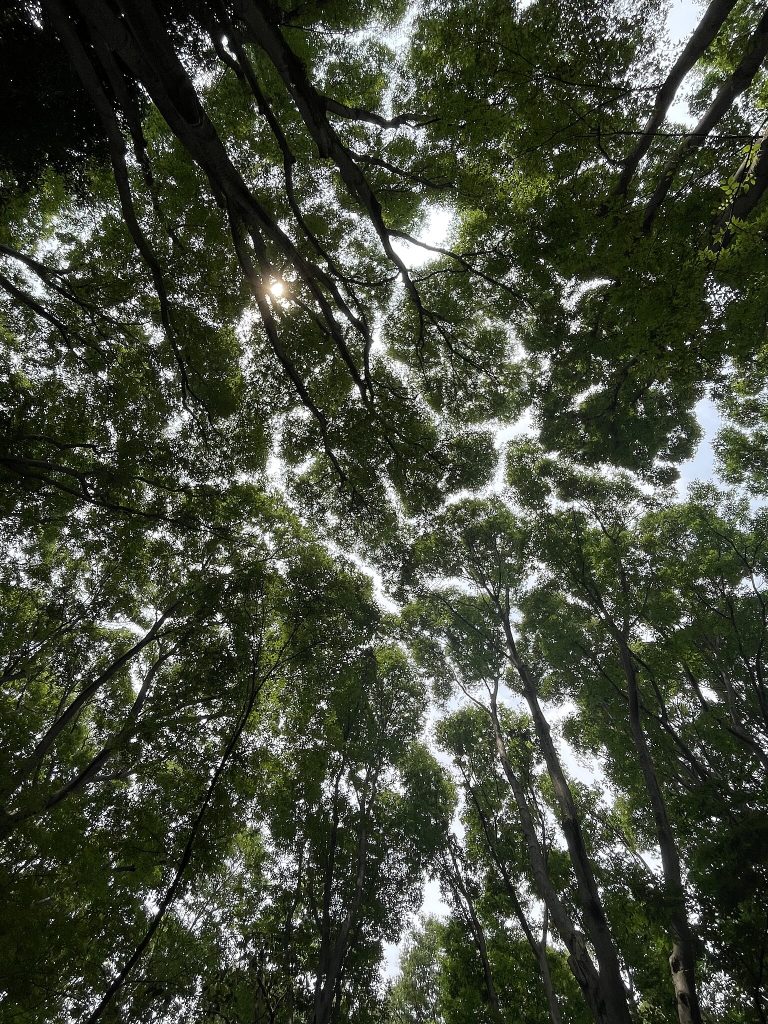
Own work
Author
Mimk0205
Historical Context
This phenomenon had been noted as early as the 1920s, but it was the Australian forester Maxwell Ralph Jacobs who first coined the term “Crown Shyness” in 1955.
Plants That Show Crown Shyness
Now let’s get to know some plants that show crown shyness.
- Eucalyptus– This plant native to Australia shows crown shyness with visible gaps in the canopy layer in open woodlands.
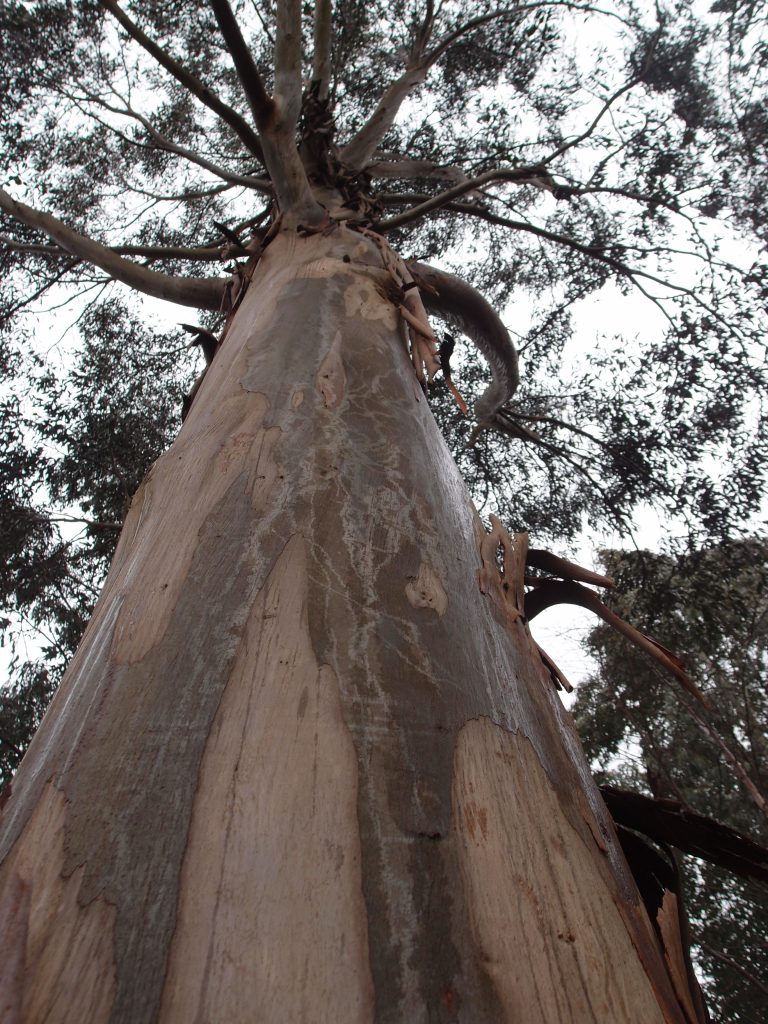
- Mangroves- plants in coastal mangrove forests in Southeast Asia show crown shyness too.
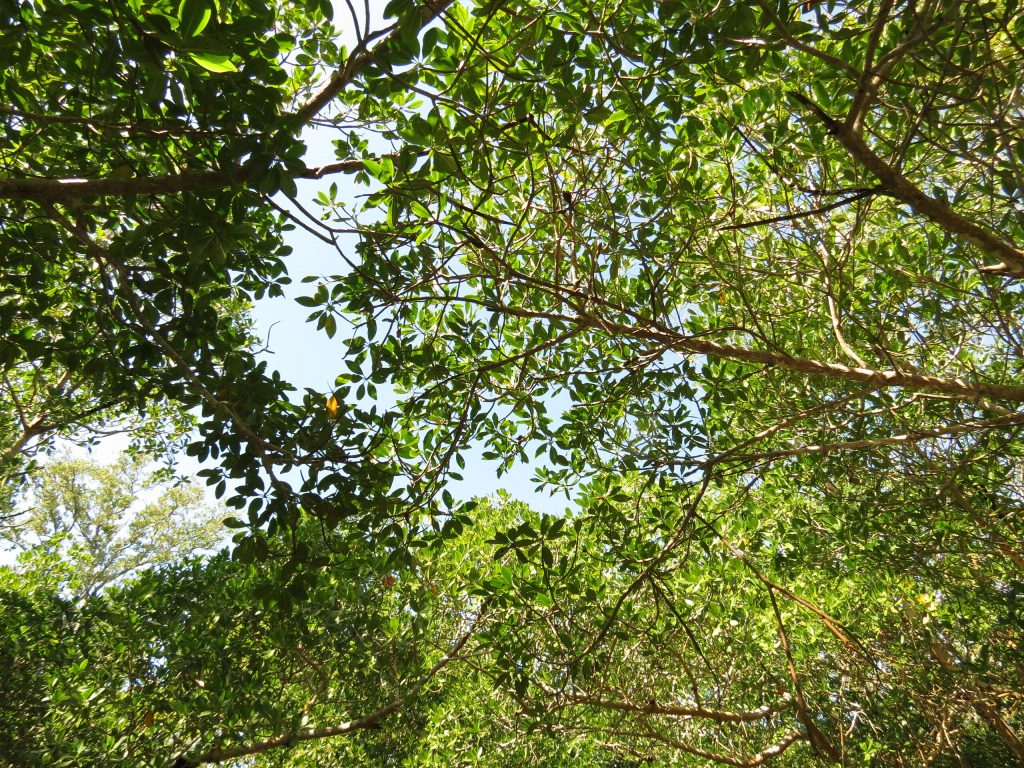
Red Mangrove Canopy
Author
Katja Schulz from Washington, D. C., USA
- Japanese Larch– This is another plant that displays crown shyness, with seasonal loss of foliage highlighting the gap patterns.
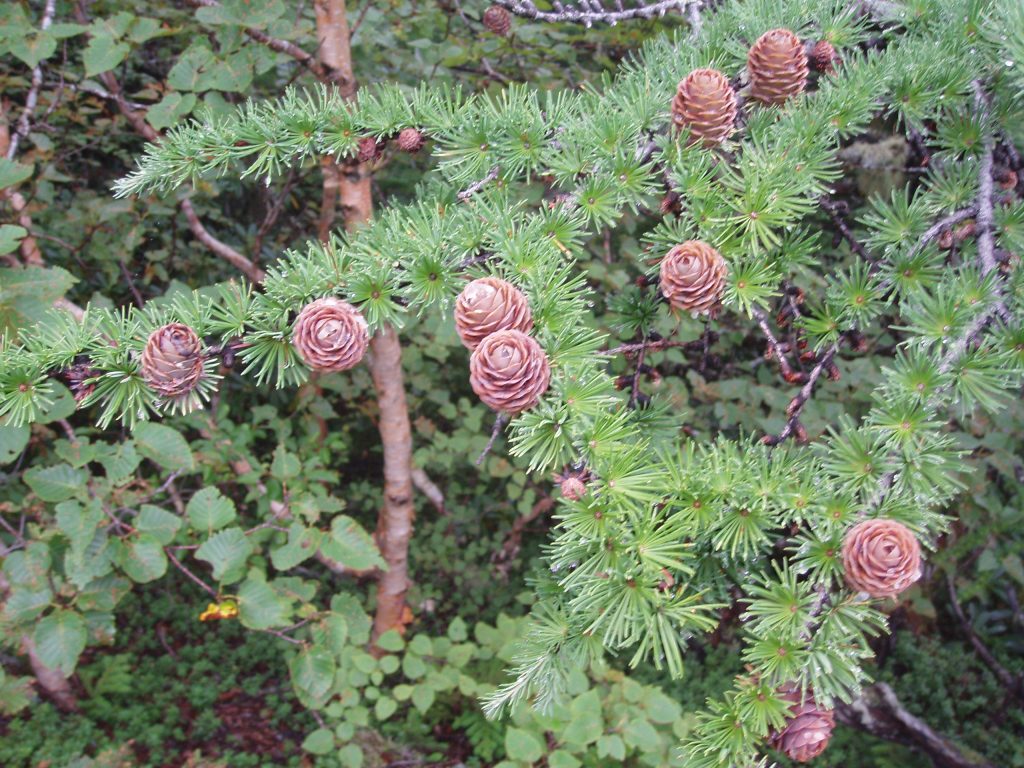
- Lodgepole Pine- This plant native to North America is another plant that shows this fascinating canopy pattern.
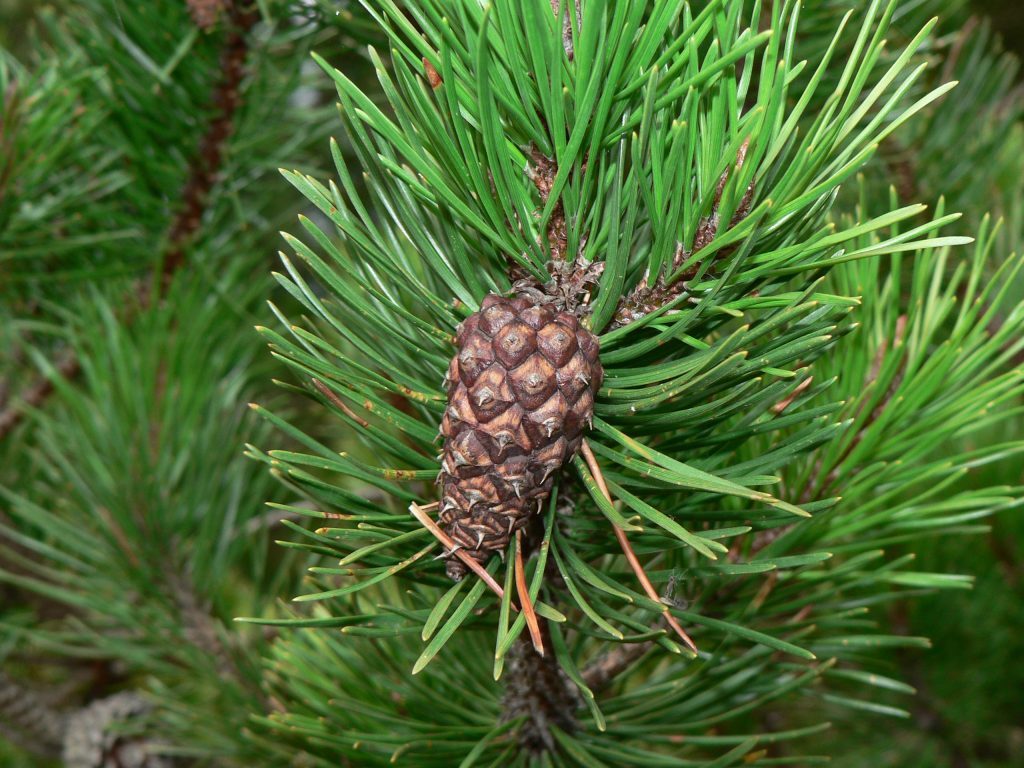
Own work
Author
Walter Siegmund
What Causes Crown Shyness?
The exact cause of crown shyness is still being debated among scientists. However, there are some possible causes.
Physical Abrasion
It’s believed that the mechanical damages caused when the branches of trees growing close together collide and rub against one another in windy conditions may cause these gaps in the canopy layer.
Damage to the bark, wounds, and snapping of the branches from this friction may cause local die-back, and the tree will grow the branches around the damage over time, creating gaps.
The trees in windy regions show more pronounced crown shyness, and that can be evidence that supports this hypothesis.
Phototropism
Another possible cause of crown shyness can be a plant’s ability to adjust its growth to maximize access to light, called phototropism.
Trees can detect far-red light, a specific wavelength of light used for photosynthesis.
This far-red light is also reflected from the leaves of the neighboring trees.
When a tree senses far-red light reflected off a nearby tree’s foliage, it can detect there’s another tree nearby that can potentially shade it, and adjust its growth to avoid being shaded, growing branches away from the neighboring tree instead of towards it.
Scientists have tested this by growing seedlings under artificial lighting that mimics far-red light and observed that they tend to grow away from the light source.
Deterring Insects & Minimizing Disease Spreading
Crown shyness can also be an adaptation to minimize being infested by pest insects.
With all the gaps in a canopy, it’s harder for insects who depend on continued foliage to travel from one plant to another across the canopy layer.
Scientists have observed that in mangrove forests, trees with crown shyness tend to have fewer insect infestations compared to others.
These gaps in the canopy can also act as barriers that minimize disease-causing pathogens from spreading among trees.
Cooperative Growth
Crown Shyness can also be a mutually beneficial adaptation for trees to share resources like sunlight among them rather than competing with one another for that, as the gaps in the crown allow for better sunlight penetration among the trees.
Plant species like lodgepole pine naturally grow in open clusters with openings in the canopy, and this can be an evolutionary adaptation to share resources instead of competing for them.
Implications of Crown Shyness
So, what can crown shyness potentially lead to?
Let’s find out:
Biodiversity Enrichment
Crown shyness can improve the biodiversity of a habitat.
The gaps in the canopy layer allow sunlight to penetrate down toward the ground, allowing a variety of understory plants, such as shrubs and herbs, to grow.
These understory plants, in return, can provide food and shelter for many insects, birds, and other small animals.
The gaps in the canopy also act as microhabitats for epiphyte plants such as ferns and orchids, and small mammals, insects, and birds.
Resilience to Climate
Crown shyness helps plants be more resilient to windy and stormy events.
With all the gaps in the crown, with no entanglement of the branches, the trees have room to sway during winds and storms without getting their branches snapped.
Minimizing Wildfire Damage
In a dense forest, a wildfire can move from the ground level to the canopy layer with the help of shrubs and low branches (ladder fuel) and spread rapidly through the canopy layer. This is called a crown fire and can be very destructive.
With crown shyness, the gaps in the canopy layer restrict the spreading of fire from trade to tree.
Also, with their branches widely apart, fire damage to a tree’s crown is minimized too.
Applications of Crown Shyness
Crown shyness has practical applications too. Let’s find out what they are.
Forestry Management
Foresters can use natural crown shyness patterns for thinning out forests to reduce overcrowding.
This allows for better utilization of sunlight and improves understory plant growth through better sunlight penetration.
The better understory layer and microhabitats in the gaps created on the canopy can result in better biodiversity.
Gaps in the crowd created by thinning can minimize storm damage and restrict the spreading of crown fires, too.
Crown shyness has applications in reforestation attempts too. By using plant species that naturally show crown shyness, foresters can ensure that the plants will utilize sunlight more efficiently, understory plants will thrive with better sunlight penetration, and there will be better biodiversity with a good understory plant layer and microhabitats in the gaps in the crown layer, as well as the trees will be more resilient to storm and fire damage.
Scientific Research
Studying crown shyness can reveal useful information about how plants communicate and respond to changes in their environment.
This information, in return,, can help with conserving forests and reforestation efforts, improving agriculture, and developing new nature-inspired technologies.
Why is Crown Shyness Still a Mystery?
Crown shyness is a phenomenon that’s not fully understood by scientists yet.
Here’s why:
Multiple Theories with No Consensus
The theories scientists have come up with so far to explain crown shyness, such as phototropism, mechanical damage, pest infestation, and disease prevention, don’t apply universally.
For example, crown shyness is observed in both windy and calm environments; mechanical abrasion can’t be the sole cause, and some species of plants show crown shyness while others growing in the same environmental conditions don’t.
Differences Among Species
Some species of trees are known for crown shyness but they don’t show that in all forests.
Crown shyness is more pronounced in tree communities of the same species than in mixed-species forests.
Also, some species naturally grow with spaced-out crowns while others form dense, entangled ones.
Differences like that make it hard to pinpoint a specific cause.
Time Restrictions
Crown shyness develops slowly over time as trees grow. So, studying it properly requires a long-term commitment as trees grow slowly, which makes it challenging.
Conclusion
Crown shyness is a fascinating phenomenon where crowns of trees avoid touching one another, creating patterns visible from the ground level.
What exactly causes this is still debated, but theories like mechanical abrasion, phototropism, cooperative growth, and adaptations to prevent pest infestations and diseases, as well as wind and fire damage, bring insights into it.
Crown shyness improves biodiversity by allowing sunlight for understory growth where many animals find food and shelter, and creating microhabitats in the gaps in the canopy for many small animals, making forests more resilient to wind, pests, diseases, and wildfires.
The phenomena have practical applications in forestry management and scientific research and still remains a mystery due to multiple factors that may be in play, differences in crown shyness among species and different environments, and the time it takes to study due to the slow growth rate of plants.

